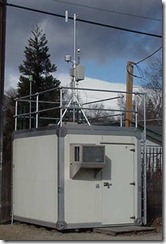 New Delhi, Aug 26 : Prime Minster Dr. Manmohan Singh on Thursday said that the situation in the Northeast is better today than it was in the recent past, but some areas of concern still remain, like the Naga-Meitei divide in Manipur.
New Delhi, Aug 26 : Prime Minster Dr. Manmohan Singh on Thursday said that the situation in the Northeast is better today than it was in the recent past, but some areas of concern still remain, like the Naga-Meitei divide in Manipur.
Addressing the second-day session of the 45th conference of Director Generals Of Police and other senior security officials here, Dr. Singh said: “In Manipur, for example, the Naga-Meitei divide had accentuated. The unfortunate growth of identity-based assertiveness in the Northeast, particularly in Manipur and the North Cachar Hills, needs well thought-out and sensitive handling.”
He said that, in other areas of the Northeast, there was need to consolidate the gains of the past while at the same time ensuring that new problems did not arise and could be controlled when they did.
“The Darjeeling hill area also needed a careful watch,” he added.
Stressing that the State police and the central paramilitary forces should take firm action against those who take the law into their own hands, Dr. Singh said: “The writ of the State should be firmly established in all these areas.
He also called for continuous vigilance against the rise of communal tensions.
He further said the conference was a valuable opportunity to enhance understanding of matters relating to internal security and to build a consensus on the new strategies that could be devised to meet the challenges facing the nation.
Dr Singh said policing in the country had become increasingly complex over the years.
“But of late the growing presence of non-state actors, fundamentalist groups and left-wing extremists has further complicated matters. The growing inter-linkages of the destabilizing and criminal forces, across states and across our borders, call for far greater vigilance and coordination between the security agencies than ever before,” he observed.
He said the Government had, over the past decade, institutionalized deliberations and structured interactions at various levels.
“This conference has been a time-tested mechanism for enhanced coordination but given the changing circumstances I believe the time has perhaps come for it to reinvent itself. Perhaps this year onwards you could set for yourself some quantifiable goals to be achieved in the coming year,” he said.
He also felt the conference should pursue its agenda of making available the considered professional consensus on important police matters in a more focused manner.
In this context, he repeated an earlier suggestion to set up a Standing Committee of Director Generals of Police to provide policy inputs and hoped that it would begin work in right earnest.
Dr Manmohan Singh also drew the attention of the conference to the disinformation campaigns of the ‘adversaries’ and asked the police to take steps to counter them .
He said modern means of communications had enabled adversarial forces to mount powerful and convincing propaganda.
“Our response to this development needs to be improved. We have to challenge disinformation, often masquerading as objective third party expert opinion, not through suppression or in position of censorship, but by ensuring the availability of better and informed opinion to public at large,” he said.
“Over the past decade, the Central Government had sought to assist states in addressing their manpower requirements through financial support for India Reserve battalions, Special Police Officers, and the setting up of village defence committees,” he added.
He pointed out that, within the police forces, the current system of promotion was based essentially on seniority.
He said this needed to be suitably recalibrated to catalyze better performance and motivation.
Dr Singh also spoke about the need to build up capacities for gathering intelligence in various Indian languages. The intelligence agencies of the Centre and States could draw upon police persons and also incentivize officers to acquire and use relevant local language skills, he said.
 Shillong, Aug 28 : The Gauhati High Court has admitted a petition by Garo Students Union challenging the proposed municipal polls in Meghalaya's Garo Hills but refused to stay the polls.
Shillong, Aug 28 : The Gauhati High Court has admitted a petition by Garo Students Union challenging the proposed municipal polls in Meghalaya's Garo Hills but refused to stay the polls. 





 Migrant workers at the Imphal relief camp.
Migrant workers at the Imphal relief camp. New Delhi, Aug 26 : Prime Minster Dr. Manmohan Singh on Thursday said that the situation in the Northeast is better today than it was in the recent past, but some areas of concern still remain, like the Naga-Meitei divide in Manipur.
New Delhi, Aug 26 : Prime Minster Dr. Manmohan Singh on Thursday said that the situation in the Northeast is better today than it was in the recent past, but some areas of concern still remain, like the Naga-Meitei divide in Manipur.







